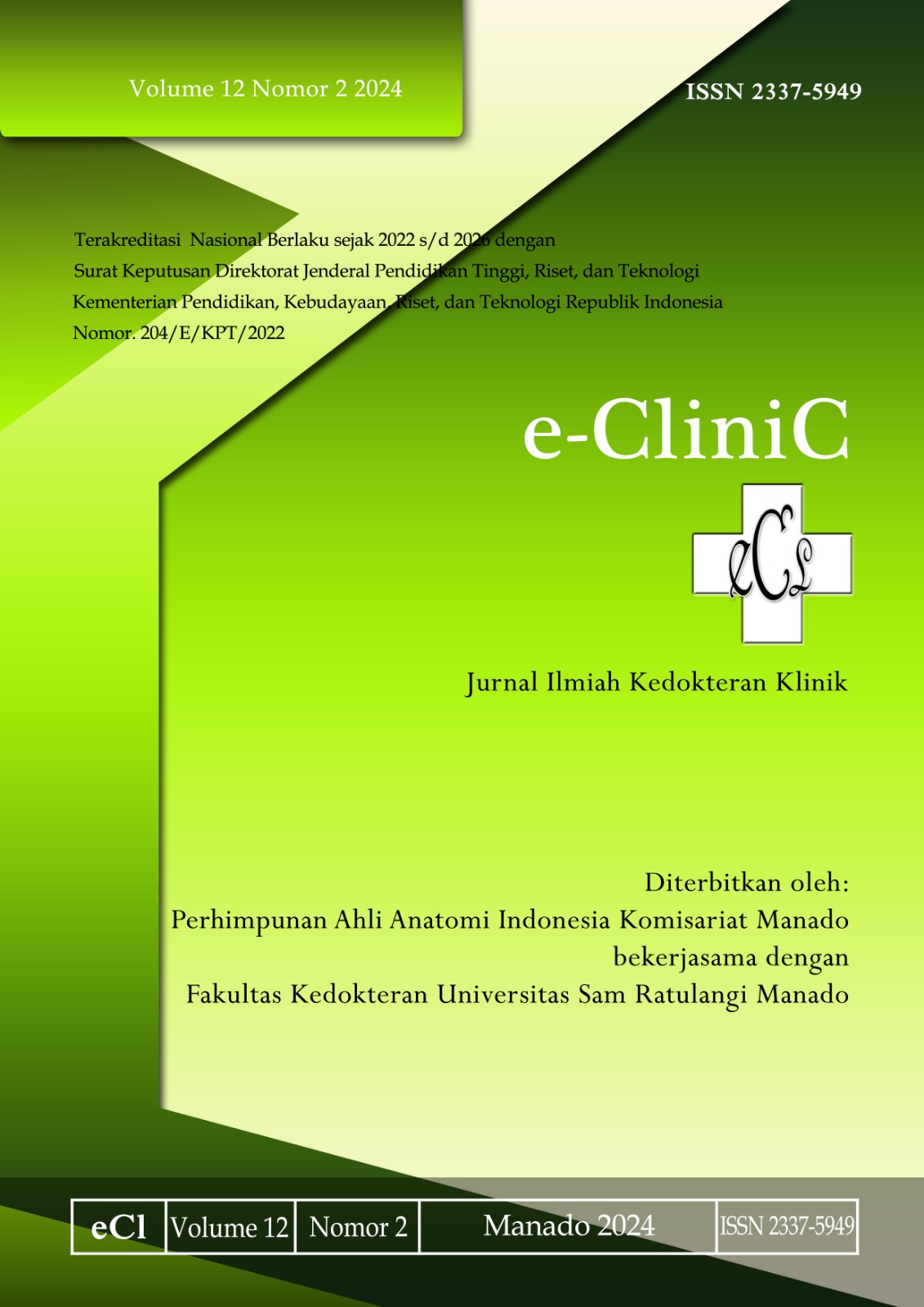Management of Crush Injury’s Complications Using Hyperbaric Oxygen Therapy: Case Series
DOI:
https://doi.org/10.35790/ecl.v12i2.46847Abstract
Abstract: Crush injury occurs due to an external trauma mechanism that directly affects the skin, muscle, and bone tissue. Crush injuries can involve several parts of the body at the same time. When accompanied by handling, wound healing in crush injury can be long-term, so that it can affect the function of the patient. Various complications that can occur ranging from secondary infection, necrosis, recurrent bleeding, to compartment syndrome. We reported serial cases of crush injury with various clinical presentations and complications, varying in the age range of 16-65 years. All four patients were given multiple managements, such as open reduction external fixation and extensive debridement. There were complications such as secondary infection and delay in the wound healing process in patients who did not on time for follow-up. The four patients received additional treatment in the form of wound dressings hyperbaric oxygen therapy (HBOT) with 5-10 90-minute sessions under 2.4 ATA pressure for 10 consecutive days. Follow-up was carried out again within a period of one month to compare the wound condition before and after HBOT. The clinical condition was getting better, marked by the formation of granulation tissue. The state of hyperoxia in HBOT accelerated the inflammatory process and angiogenesis during the wound healing process characterized by the eradication of bacteria in the wound tissue and accelerated neovascularization formation. In conclusion, adequate therapy, wound dressing, and patient compliance affect patient outcome. Moreover, the addition of hyperbaric oxygen therapy has shown to accelerate the wound healing process and restore the patient's limb function.
Keywords: crush injury; hyperbaric oxygen therapy; oxygen; wound healing
References
Lee N, Peysha J, Ferrada P. Crush injury and extremity compartment syndromes. Current Trauma Reports. 2018;4:284-8. Doi:10.1007/s40719-018-0141-3.
Buettner MF, Wolkenhauer D. Hyperbaric Oxygen therapy in the treatment of open fractures and crush injuries. Emerg Med Clin North Am. 2007;25(1):177-88. Doi: 10.1016/j.emc.2007.01.008
Dougherty JE. The role of hyperbaric oxygen therapy in crush injuries. Crit Care Nurs Q. 2013;36(3):299-309. Doi: 10.1097/CNQ.0b013e318294ea41.
Malinoski DJ, Slater MS, Mullins RJ. Crush injury and rhabdomyolysis. Crit Care Clin. 2004;20(1):171-92. Available from: https://doi.org/10.1016/S0749-0704(03)00091-5.)
Centers for Disease Control and Prevention (CDC). Blast injuries crush injury and crush syndrome. 2009. Available from: http://www.bt.cdc.gov/masscasualties/pdf/CrushInjury.pdf/
Neto PH, Ribeiro ZB, Pinho AB, de Almeida CHR, de Albuquerque Maranhão CA, Goncalves JdCC, et al. Hyperbaric oxygen therapy for the treatment of a crush injury of the hand: a case report. J Trauma Inj. 2022;35(3):209-14. Doi: https://doi.org/10.20408/jti.2021.0048
Buras J. Basic mechanisms of hyperbaric oxygen in the treatment of ischemia-reperfusion injury. Int Anesthesiol Clin. 2000;38(1):91-109. Doi: 10.1097/00004311-200001000-00007.
Bird AD, Telfer AB. Effect of hyperbaric oxygen on limb circulation. Lancer 1965;1(7381):355-6. Doi: 10.1016/s0140-6736(65)91783-6.
Nylander G, Lewis D, Nordstorm H, Larsson J. Reduction of postischemic edema with hyperbaric oxygen. Plast Reconstr Surg. 1985;76(4):596-603. Doi: 10.1097/00006534-198510000-00021.
Van Neck JW, Tuk B, Fijneman EM, Redeker JJ, Talahatu EM, Tong M. Hyperbaric oxygen therapy for wound healing in diabetic rats: Varying efficacy after a clinically-based protocol. PloS One. 2017;12(5):e0177766. Doi: 10.1371/journal.pone.0177766.
Goldman RJ. Hyperbaric oxygen therapy for wound healing and limb salvage: a systematic review. PM&R, 2009;1(5):471–89. Doi: 10.1016/j.pmrj.2009.03.012.
Downloads
Published
How to Cite
Issue
Section
License
Copyright (c) 2023 Patrick S. Arikalang, Mendy J. Hatibie, Maximillian C. Oley, Albertus D. Noersasongko, Tommy Suharso

This work is licensed under a Creative Commons Attribution-NonCommercial 4.0 International License.
COPYRIGHT
Authors who publish with this journal agree to the following terms:
Authors hold their copyright and grant this journal the privilege of first publication, with the work simultaneously licensed under a Creative Commons Attribution License that permits others to impart the work with an acknowledgment of the work's origin and initial publication by this journal.
Authors can enter into separate or additional contractual arrangements for the non-exclusive distribution of the journal's published version of the work (for example, post it to an institutional repository or publish it in a book), with an acknowledgment of its underlying publication in this journal.
Authors are permitted and encouraged to post their work online (for example, in institutional repositories or on their website) as it can lead to productive exchanges, as well as earlier and greater citation of the published work (See The Effect of Open Access).







